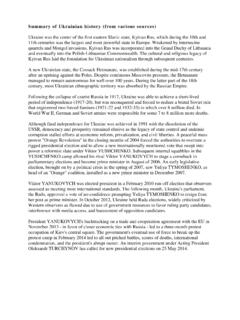Transcription of The Indian coal sector: Challenges and future outlook - pwc
1 The Indian coal sector: Challenges and future outlookIndian Chamber of 06 | outlook 11 | Innovation and technology 17 | Policies and regulations 20 | Overseas acquisitions and long-term strategies 22 | Summary 25 Mining in India is a major economic activity which contributes significantly to the economy of India. The GDP contribution of the mining industry varies from to only but going by the GDP of the total industrial sector it contributes around 10% to 11%. Coal with a proven reserve of 860 billion tonnes is mined the most in the world.
2 At the same time, the demand curve for this sector is always on the rising side. The major reasons are the soaring power demand in India and China, the growing worldwide steel production, and lastly, the increasingly stringent environment regulations. As a prospering economy, India faces energy security as a growing challenge and the coal production is expected to grow at a CAGR of around 7% during 2011-12 to 2013-14. The Indian coal market is set to witness great boost in near future because of the rising government initiatives. Recently, allocation of coal blocks and stake sales in PSU are some of the major steps that were taken by the government to boost the production and investment in the coal industry .
3 However, the upward pressure would definitely widen the demand supply mismatch in the coming years. To address these concerns, Indian conglomerates are making efforts in overseas acquisitions as well. In addition, it is also exploring un-conventional alternatives such as Coal Gasification for supply of energy. Varied coal gasification technologies are re-evolving over the globe to replace the conventional power generation methods. In this context, Indian Chamber of Commerce to further strengthen its support amongst industry representatives and policy-makers presents the 4th India Coal Summit during 28th November, 2012 at New Delhi.
4 PricewaterhouseCoopers Pvt Ltd. is the Knowledge Partner of this initiative. This platform will bring together various stakeholders to discuss, share and evolve suitable strategies and development MundhraPresident Indian Chamber of CommerceForeword6 PwCGlobal coal production (Mtoe)IntroductionGlobal coal scenarioGlobally, coal resources have been estimated at over 861 billion tonne. While India accounts for 286 billion tonne of coal resources (as on 31 March 2011), other countries with major chunk of resources are USA, China, Australia, Indonesia, South Africa and meets around of the global primary energy needs and generates 42% of the world s electricity.
5 In 2011, coal was one of the fastest growing forms of energy after renewable sources and its share in the global primary energy consumption increased to since production in the Asia Pacific region has grown tremendously and accounts for over 67% of the total production globally (2011) as compared to about 27% in 1981 (in terms of energy equivalent).Last year, around billion tonne of hard coal and 1 billion tonne of brown coal were used worldwide. Since 2000, the global consumption of coal has grown faster than any other fuel. Currently, the five largest coal users are China, USA, India, Russia and Germany.
6 They account for 77% of the total global has the fifth largest coal reserves in the world. Of the total reserves, nearly 88% are non-coking coal reserves, while tertiary coals reserves account for a meager % and the balance is coking coal. The Indian coal is characterised by its high ash content (45%) and low sulphur content. The power sector is the largest consumer of coal followed by the iron and steel and cement AmericaSouth and Central AmericaEurope and EurasiaMiddle EastAfricaAsia PacificSource: BP s Statistical Review of World Energy, June 2012 OverviewThe Indian coal sector: Challenges and future outlook 7 Demand-supply scenarioIndia s Gondwana Coal ReservesThe country s coal production has increased from~431 MT in 2006-07 to ~554 MT* in 2011-12 (an increase of ).
7 On the other hand, the demand for coal has grown at a CAGR of more than 7% in the last decade and has reached around 600 MT. The India Energy Book, 2012 pegs the country s total demand-supply gap (including coking coal) at about 98MT. Out of this, India imports about 85 million tonne of coal productionDemandCoal HubsSource: India Energy Book, 2012 (World Energy Council, Indian Member Committee) Source: Geological Survey of India 8 PwCIndustry structureCurrently, the government enjoys a monopoly in producing coal with over 90% of the production coming from government-controlled mines.
8 The policy for captive mining was introduced in 1993. This opened the coal sector to private investment, although no promising progress has been made in the captive coal blocks allotted by the government. Out of the 200 allocated blocks (22 have been de-allocated), only 30 mines have commenced production due to various reasons. The combined production from these was merely MT in FY 2010-11 against a target of 104 MT. Contentious issues, availability of geological data, land acquisition and R&R, environment clearances, mining lease, etc.
9 Are the primary reasons behind the dismal production. Currently, coal block auction is proposed and detailed mechanism is being formulated for transparency and efficient scenarioIndia is the world s fifth largest energy consumer, accounting for of the global energy consumption. Maharashtra is the leading state in electricity generation. The current per capita consumption of energy in India is toe against the global average of toe, indicating a high potential for growth in this sector. Of the total electricity consumed in the country, approximately 80% is produced from coal consumption in India (2010-11)Sources of electricity generation(Generation figures mentioned above excludes generation from plants up to 25 MW capacity)Electricity- 70%Steel- 7%Cement- 3%Paper- 0%Cotton- 0%Others- 19%Thermal- : Annual report, Ministry of coalThe Indian coal sector: Challenges and future outlook 9 Steel sectorCoal is an essential input in the production of steel.
10 In 2011, the world crude steel production reached 1,518 MT, reflecting a growth of over 2010. The per capita finished steel consumption in 2011 is estimated at 215 kg for world and 460 kg for China, while that for India it is estimated currently at 55 kg (provisional). This clearly indicates scope for increasing the per capita steel consumption, a factor which correlates to the coking coal availability and production within the has very limited reserves of coking coal which is a key raw material for the production of steel. Coking coal accounts for only 15% of the country s overall proven coal reserves.















